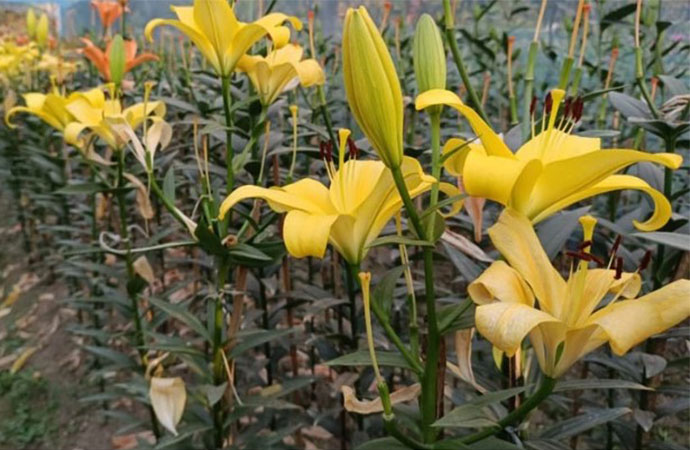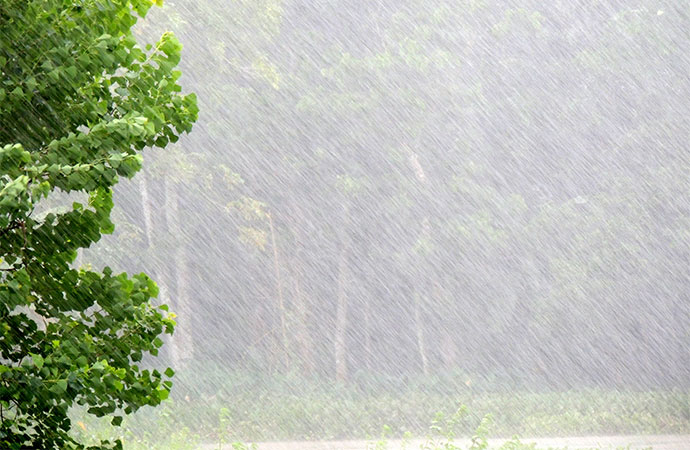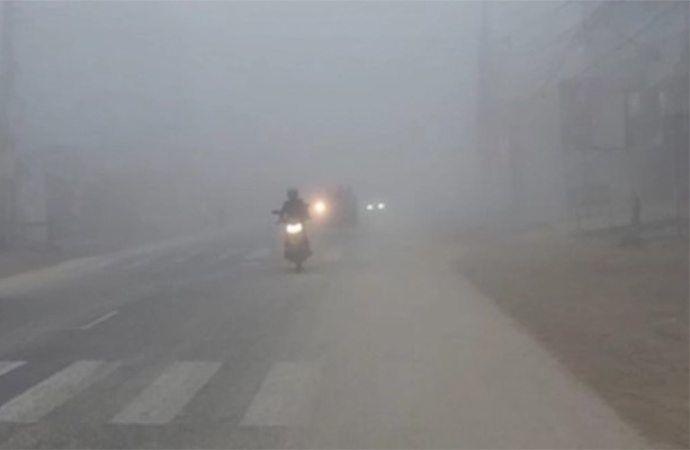Nature

Spotted Owlet from rear. Photo: Enam Ul Haque
To stand face to face with an owl was one of the many rewards of our frequent morning strolls on the solitary streets of Purbachal. We had always wondered which species of owls dominated the night life of the uninhabited township; and regretted never having done an evening stroll there to join the night-party. On that lively dawn, however, the mountain came to Mohamed when a stocky Spotted Owlet sat wide-eyed on a roadside machang at the end of Sector 20.
We hid behind a bush and stood still when we spotted the wary owl sitting only a few metres away. Our camouflage outfit and stealthy gait gave us the break we needed to observe and photograph the Spotted Owlet for a precious minute. The owlet was looking sharply at the wayward starlings romping on the far end of machang, and did not focus its keen eyes on us in spite of our heavy breathing and cursing.
Although we stood behind the Spotted Owlet it was facing us squarely by turning its head 180 degrees. Its large golden-yellow eyes were wide open in the mild morning sunlight. The big, white eyebrows on its forehead and the long, snowy handlebar moustache below the bill bordered its striking oval face. The monotone of its grey-brown back was broken stylishly by many warped lines of round white spots.
Alarmed by the rattling of our cameras, the Spotted Owlet turned around on the machang after a small leap in the air. We could clearly see its banded belly and take note of its robust feet and ready claws. We felt like breaking our cover and stepping out of the bush to have a word with the inquisitive bird. We understood why in the ancient Homeric epic the great goddess Athena chose the Little Owl as her companion and mascot.
While the companion of the Greek goddess of wisdom lived mostly in Europe, its close cousin, our Spotted Owlet, lives mostly in the Indian subcontinent, Thailand and Vietnam. Both of these little nocturnal birds are cute and cuddly; they love to live in human neighbourhoods and often venture out in the light of day. These two little birds may be the most familiar of the 456 species of owls of the world.
Besides the sway of epic poems, the Greeks and the Romans in the early cities had many good reasons to venerate an owl that eat mice, cockroaches, locusts and other uncontainable vermin. Because of the owl's uncanny ability to see in the dark, they imagined that it possessed a supernatural inner light and an ability to foretell the future. By hooting, the owl famously foretold the unfortunate deaths of many great Romans like Julius Caesar, Augustus and Aurelius.
For millennia the owls of Europe retained some supernatural powers to predict future events. Even in the early twentieth century, many people in the UK believed that the owls foretold meteorological conditions by screeching - fair or foul weather depending on the tone of their voice. The great romantic poet William Wordsworth wrote:
...when the owl
Tries his two voices for a favorite strain -
'Tu-whit--Tu-whoo!' the unsuspecting fowl
Forebodes mishap or seems but to complain;
The Spotted Owlets of Purbachal do not seem to complain, although the Fish Owls and the Fishing Cats, etcetera living there have much to worry about as their feeding sites and sleeping quarters diminish every day. For the Owlets in Purbachal of today and the future, however, there is enough food and lodging. An army of cockroaches and mice of tomorrow would replace the grasshopper and cricket of today as their food.
As the sun brightened and the starlings turned noisier, the Spotted Owlet took off and flew to a nearby Shirish tree. We watched the Owlet's silent and deeply undulating flight; and tip-toed to the Shirish tree hoping to see a family of the Spotted Owlets there. In the tangles of sturdy branches and the affluence of golden foliage, the mischievous tree hid the Owlet and family that we looked for till our necks began to ache.
We have seen pairs of Spotted Owlets raise their families in our rickety parks several times and once even on a roadside tree in the city. It was a memorable sight to see the parents guard a pair of fuzzy chicks sunbathing on a roadside Raintree. With an ever-increasing population of House Crows it is no longer possible to see such a nativity scene on a roadside tree here.
With little regret, we left Purbachal. We were sure to see the Spotted Owlet there for a long time to come. The little nocturnal bird would be able to cope with all the upheavals piling up on a piece of land we wish to transform into a 'model town'. That owl has done it before elsewhere in our city. We continue to see the families of Spotted Owlets in several parks of the city besides the Dhaka University Campus and National Botanic Garden.
When the insect-eating nocturnal birds like the Nightjars have completely disappeared from the capital, we continue to see the Spotted Owlet at night even in our overcrowded neighbourhood. The important difference between the two kinds of birds is that the Nightjar feeds on flying insects and the Owlet feeds on crawling insects. Indiscriminate use of insecticides has killed nearly all flying insects but not the crawling cockroaches.
A Spotted Owlet of the city may forebode mishap and not complain. It has been carrying the names of Greek goddess Athena as well as the greatest Indian god Brahma ever since the ornithologists named it Athene brama. Many indigenous people are known to carry owl feathers to ward off evil spirits. Wouldn't the Owlets be able to ward off the evils we bring upon the land they once owned!
Enam Ul Haque is the Chairman of WildTeam. First Published in The Business Standard.

























Leave a Comment
Recent Posts
The Forbidden City: A timeless ...
For foreigners exploring Beijing, the Forbidden City stands as a magni ...
2025: Moin, Mamun elected DCAB ...
AKM Moinuddin, Special Correspondent of United News of Bangladesh (UNB ...
Dhaka's ties with Delhi won’t get stuck on single is ..
Old state, new society
A foreign policy imperative for the year ahead
PS Commentators’ Predictions for 2025